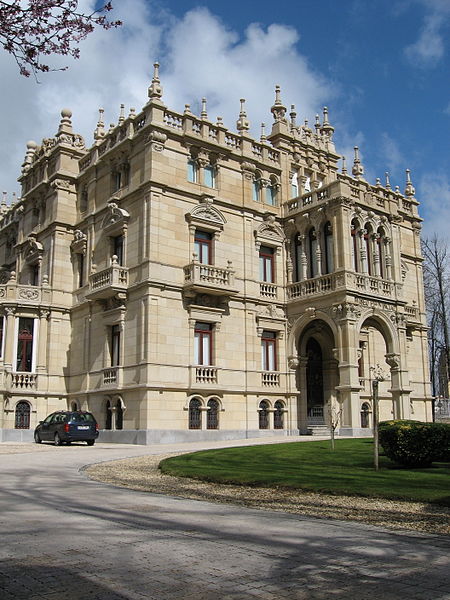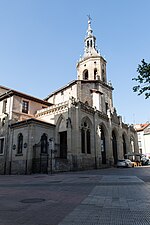Augustin Zulueta Palace

The Augustin Zulueta Palace (Spanish: Palacio Augustín Zulueta) is a palace located in Vitoria-Gazteiz, Álava, Spain, in Fray Francisco promenade, 8. The palace was built in 1912 by the architects Julián de Apraiz and Javier Luque, designers of the New Cathedral of Vitoria-Gazteiz. They followed the taste of the wealthy families of that time. It was Don Ricardo de Augustin, developer of many other buildings, who ordered its construction. The palace currently houses the Museum of Fine Arts of Álava (Museo de Bellas Artes de Álava). The museum is devoted to Spanish art from the 17th to the 20th centuries, as well as Basque art from 1850 to 1950. It was declared Bien de Interés Cultural in 1962.
Excerpt from the Wikipedia article Augustin Zulueta Palace (License: CC BY-SA 3.0, Authors, Images).Augustin Zulueta Palace
Frai Francisco Vitoria ibilbidea/Paseo Fray Francisco de Vitoria, Vitoria-Gasteiz Mendizorrotza
Geographical coordinates (GPS) Address Nearby Places Show on map
Geographical coordinates (GPS)
| Latitude | Longitude |
|---|---|
| N 42.841619 ° | E -2.679699 ° |
Address
Arte Ederren museoa/Museo de Bellas Artes
Frai Francisco Vitoria ibilbidea/Paseo Fray Francisco de Vitoria 8
01007 Vitoria-Gasteiz, Mendizorrotza
Autonomous Community of the Basque Country, Spain
Open on Google Maps











